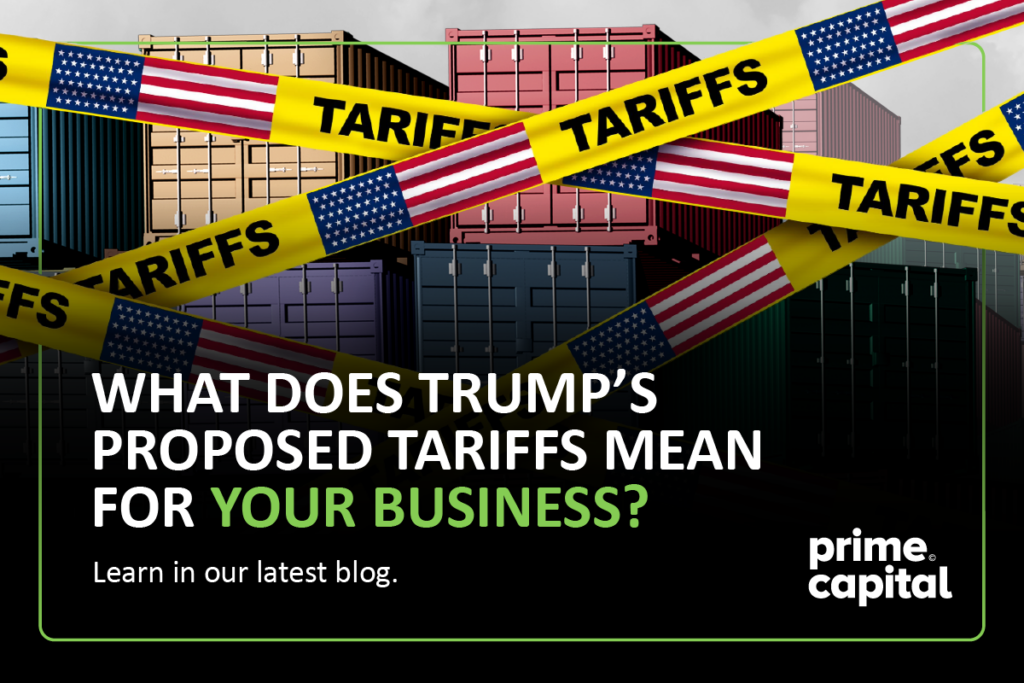The recent announcement by President Donald Trump of a 25% tariff on all Canadian imports has sent shockwaves through the business community. This policy, aimed at addressing border security concerns and trade imbalances, could have significant repercussions for Canadian exporters and U.S. businesses reliant on Canadian goods.
With Canada sending approximately 75% of its total exports to the U.S., the economic impact of these tariffs could be profound. Industries such as automotive, energy, consumer goods, and agriculture face rising costs, disrupted supply chains, and potential job losses.
However, Canada is not standing by idly. Prime Minister Justin Trudeau and opposition leader Pierre Poilievre have both announced retaliatory tariffs on U.S. imports, setting the stage for an escalating trade conflict. These countermeasures could have widespread effects on both economies.
This article will explore:
✅ Which industries will be most affected
✅ The broader economic impact on both Canada and the U.S.
✅ How businesses can mitigate risk in a rapidly changing trade environment
Which Canadian Industries Will Be Most Affected?
The proposed tariffs pose a serious threat to multiple Canadian industries that rely on U.S. trade. Here are some of the key sectors that would feel the impact:
1. Automotive Industry
- Canada’s auto parts industry is deeply integrated with the U.S., with parts crossing the border multiple times before final assembly.
- In 2022, 94.6% of Canada’s motor vehicle and parts exports (worth $82.2 billion CAD) went to the U.S..
- Higher production costs could force automakers to raise vehicle prices, impacting consumers in both countries.
2. Energy Sector
- The U.S. is the primary buyer of Canadian oil and gas, with 88.5% of Canadian energy exports (worth $165.9 billion CAD) going to the U.S..
- A tariff on energy products could lead to higher fuel costs for American consumers while reducing demand for Canadian oil.
- Canadian energy companies may be forced to seek alternative markets or absorb financial losses.
3. Consumer Goods & Retail
- 80.1% of Canada’s consumer goods exports go to the U.S..
- A 25% tariff would mean higher costs for American retailers and higher prices for consumers.
- This could lead to lower sales volumes, job losses, and supply chain disruptions.
4. Agriculture & Food Exports
- Canada exported $60.5 billion CAD in farm and food products in 2022, with 46.5% going to the U.S..
- A tariff could result in reduced demand for Canadian agricultural products, impacting farmers and food producers.
- American consumers might see higher grocery prices, further fueling inflation concerns.
The Economic Fallout: A Two-Way Problem
While these tariffs aim to benefit U.S. industries, they could also create economic ripple effects on both sides of the border.
Impact on Canada
✅ Job losses in key export industries such as manufacturing and agriculture.
✅ Lower investment confidence as businesses face uncertainty.
✅ Retaliatory tariffs from the Canadian government, targeting U.S. goods.
✅ Supply chain challenges that could disrupt businesses across multiple industries.
Impact on the U.S.
✅ Higher consumer prices for vehicles, fuel, groceries, and manufactured goods.
✅ Increased production costs for American manufacturers that rely on Canadian imports.
✅ Supply chain disruptions for industries dependent on cross-border trade.
✅ Retaliatory tariffs from Canada, leading to a broader trade dispute.
Canada’s Retaliatory Response: The Trade War Begins?
Prime Minister Justin Trudeau has vowed to impose counter-tariffs on U.S. goods equal in value to Trump’s tariffs on Canada. Opposition leader Pierre Poilievre has also supported a firm stance, reinforcing bipartisan unity in Canada’s response.
What Retaliatory Tariffs Could Look Like
- Targeting politically sensitive U.S. industries, such as agriculture, consumer goods, and steel.
- Matching the U.S. tariff rate of 25%, ensuring an equal economic impact on American exports.
- Impacting key American exports to Canada, such as automobiles, dairy, and alcohol.
Could This Lead to a Trade War?
- If Canada follows through on its retaliatory measures, this could escalate into a prolonged trade war.
- Key sectors such as steel, aluminum, and agriculture could see further trade restrictions, impacting businesses on both sides of the border.
- The uncertainty of trade policy may lead to slower economic growth in both countries.
How Businesses Can Mitigate the Impact of Tariffs
While companies cannot control trade policies, they can take proactive steps to minimize their exposure to rising costs.
✅ 1. Diversify Markets
- Reduce reliance on the U.S. by expanding exports to other markets.
- Leverage trade agreements like CETA (with Europe) and CPTPP (with Asia-Pacific) to access tariff-free opportunities.
✅ 2. Optimize Supply Chains
- Identify alternative suppliers in tariff-free regions.
- Shift production to U.S.-based facilities to avoid cross-border tariffs.
- Streamline logistics to reduce transport costs.
✅ 3. Explore Financial Solutions
- Plan for increased costs with smarter financial forecasting.
- Seek government relief programs that may offset tariff impacts.
- Utilize financial services like Prime Capital to manage cash flow and operational adjustments.
✅ 4. Stay Informed & Adapt Quickly
- Monitor policy changes and adjust pricing strategies accordingly.
- Engage with trade experts and industry associations to stay ahead of developments.
Conclusion: Preparation is Key
President Trump’s proposed 25% tariffs on Canadian imports present serious risks to cross-border trade. However, with Canada vowing to retaliate, businesses must prepare for a prolonged period of economic uncertainty.
By diversifying markets, optimizing supply chains, and leveraging financial solutions, Canadian companies can turn this challenge into an opportunity for growth and resilience.
🔹 Need expert financial guidance? Contact Prime Capital today to explore solutions tailored to your business needs.
Sources & References
- Statistics Canada – “Canadian International Merchandise Trade Report (2022)”: https://www150.statcan.gc.ca/n1/daily-quotidien/230509/dq230509a-eng.htm
- Government of Canada – “Trade and Tariff Information”: https://international.canada.ca/en/global-affairs/services/trade/tariffs-regulations/harmonized-system-codes
- Deloitte Report – “Tariffs and North American Trade Relations”: https://www2.deloitte.com/content/dam/Deloitte/ca/Documents/financial-services/ca-tariffs-and-north-american-trade-relations-en-aoda.pdf
- U.S. Trade Representative (USTR) – “Impact of Tariffs on U.S. Trade Policy”: https://ustr.gov/about-us/policy-offices/press-office/press-releases/2024/september/ustr-finalizes-action-china-tariffs-following-statutory-four-year-review





